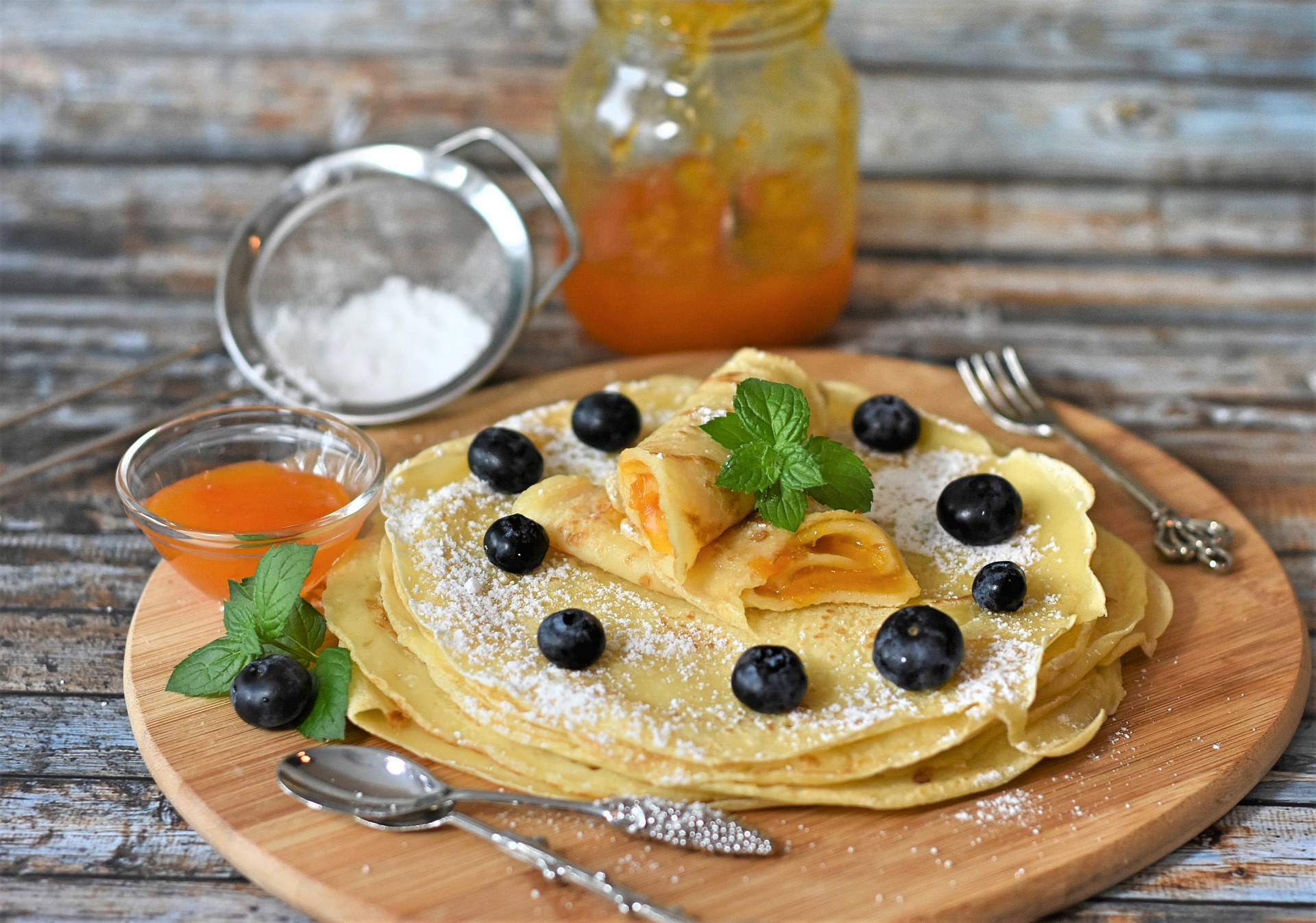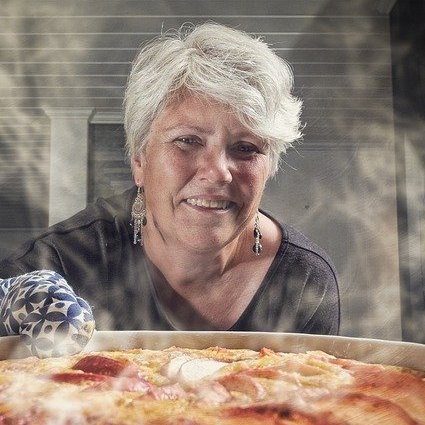Salad “Olivier”
Salad “Olivier” is familiar to every Russian since childhood, this can be said to be a traditional dish on the New Year’s table and a frequent guest at the holidays. Salad, which in Russia has already become something more than just a salad, is New Year’s Eve chores and a sense of celebration, a taste of celebration and a magical time of the year, both for adults and children. Each family has its own secrets and traditions of making this salad, and the abundance and availability of products at any time of the year and new trends in cooking make adjustments to old recipes.
For many, this salad is the most delicious, because it includes a lot of available ingredients, such as sausage, green peas, boiled egg, boiled potatoes and carrots, onions, mayonnaise. For spiciness, you can add Russian mustard.
Pancakes
Even my universal laziness recedes before the desire to enjoy freshly baked pancakes. My love for pancakes is like for the Motherland, all-consuming.
I love watching pancakes being baked. Pour the dough onto the hot bottom. Damn squeals and bubbles, sort of dissatisfied. Then it starts to calm down and, as if warming up, exude a delicious aroma, and here you need to deftly pry it off and, after letting it flutter a little in the air, turn it over to the other side. Here it’s up to the small thing to wait until the other side is browned.
And then came that sweet moment. You carefully remove the pancake and put it on a dish, quickly pour the dough for the second pancake. And the first one you start to lubricate with butter. A hot pancake happily absorbs the oil, adding the aroma of fresh cream to its smell. To give ourselves a reprieve before the bliss of eating the first pancake, we digress to flipping the second pancake. Phew and you are ready. And there is nothing tastier in the world than this first pancake. You eat it without interrupting the taste with any additives. This will later be a pancake with sour cream, and a pancake with red caviar, and a pancake with linden honey, and a pancake with homemade apricot jam, and a lot of different options. But they will not kill the taste of this first pancake.
Traditionally in Russia, pancakes were baked at Maslenitsa. Many people know that Maslenitsa is a pagan holiday, and pancakes symbolize the sun. After all, Shrove Tuesday announces the arrival of spring, so eating this dish is very pleasant not only physically, but also morally. I love pancakes, especially with milk, they always turn out very thin and tender.
However, they are easy to prepare and are loved at any other time. In the people they are also called – quick bread. Probably because their composition, like the composition of bread, includes flour. Also eggs and milk. Well, salt, sugar, of course, to taste.
Solyanka
There is a playful gastronomic rule among foreign tourists: in order not to die of hunger in Russia, it is enough to know one word – hodgepodge. Many centuries ago, when there were not even tomatoes in Russia, peasants cooked this soup as an appetizer for vodka. The composition of the hodgepodge necessarily included brine, fatty meat and vegetables from the garden. Due to its richness and fat content, hodgepodge helped to get drunk less and perfectly satisfies hunger. However, this soup could not be found on the tables of the upper class, so the original name of the soup – village – came from the word “village”.
In our current everyday life, the phrase “hodgepodge” is firmly entrenched, which is used not only in cooking, but also in other areas of life to describe the diversity of the composition of something.
Cooking:
Boil beef broth with bay leaf and black pepper. Finely chop the meat from the broth, sausages, sausage, ham, onions, cucumbers, parsley and simmer for 10 minutes with tomato paste.
Transfer the prepared mixture to the broth and cook for 10 minutes. Then add meat, sausages, ham and sausage. Boil until boiling.
Pour the olives along with the brine into the soup and bring to a boil.
This soup is good to cook when it’s cold outside. Solyanka is great for warming up. This is probably the most satisfying soup. It includes meat, on which you need to cook a strong broth, as well as sausage, sausages, you can smoked. The more varied, the tastier. Also included in this soup are pickled cucumbers, olives, tomato paste, onions, and potatoes.
Kulebyak
Kulebyaka is one of the types of meat, fish or mushroom closed pie. Traditional Russian dish.
In the old days, not a single feast could do without an oblong closed pie with a complex and varied filling, whether it was an ordinary peasant or a festive, royal one.
They ate kulebyaka, treated themselves, enjoyed, marveling at the delicate taste of the multi-tiered filling melting in the mouth, which (lo and behold!) never mixed, but lay in even layers separated from each other by a thin pancake partition. This aerobatics of Russian pastries greatly delighted visiting French chefs in the 19th century. To such an extent that they borrowed not only the technique of making kulebyaka, but also its name, then serving their compatriots with delicious Russian pastries called “coulibiaca”.
Fact: Kulebyaki in Russia had a wealth of subspecies – open, closed, half-open, high, multi-layered (kurniki). They also baked bread pies – kulebyaki with a liquid filling. When serving, the top layer of dough-cover was removed from them and a spoon was served, with which the eater slurped – scooped up the fragrant, hot “inside” of the pie.
The aroma and taste of this ancient pie will surprise you.
In ancient times, kulebyaka in Russia was served strictly according to the schedule: after the first courses, between boiled and baked fish, but always before porridge and dessert. It was customary for chefs in taverns and restaurants to pray before preparing pies, because only with clean hands, thoughts and soul could one make the most delicious, juicy and satisfying kulebyaki – a real Russian miracle of culinary skill.
—
The Russian cuisine is rich in variety, with dishes that are both hearty and light.
Russian dishes are often influenced by the country’s long history of trade with other cultures.
This has led to dishes like borscht, a beet soup that is popular in Eastern Europe, which can be traced back to the Tartars of Central Asia.



